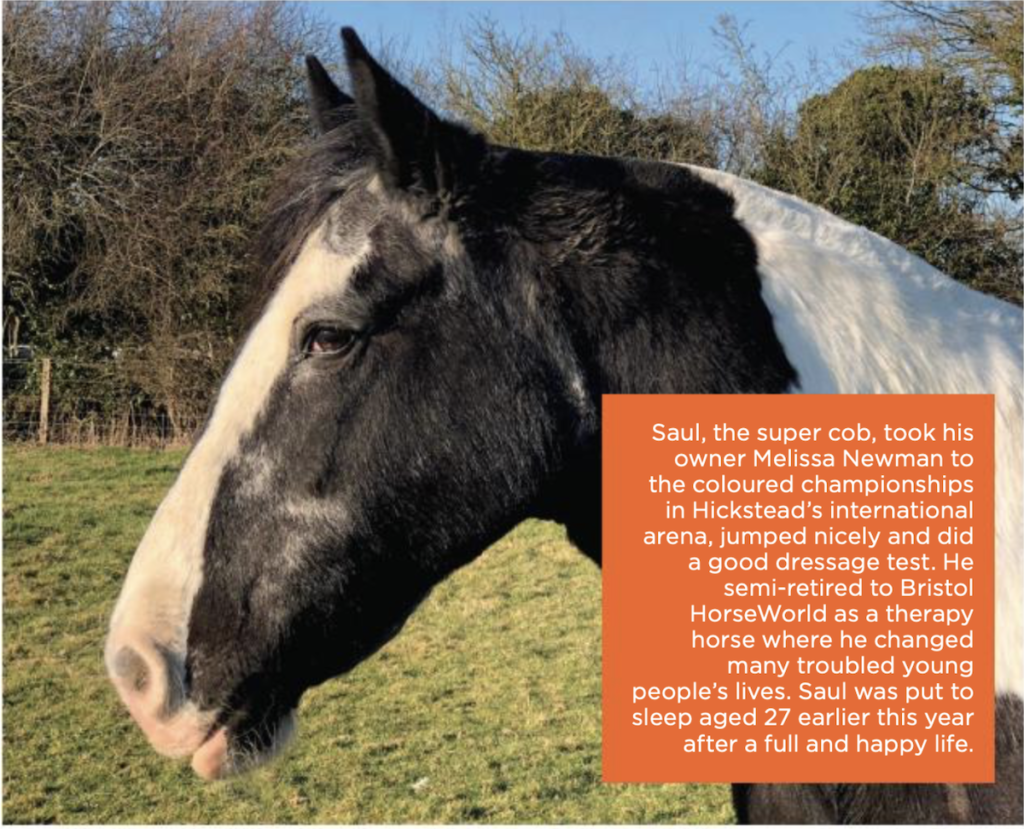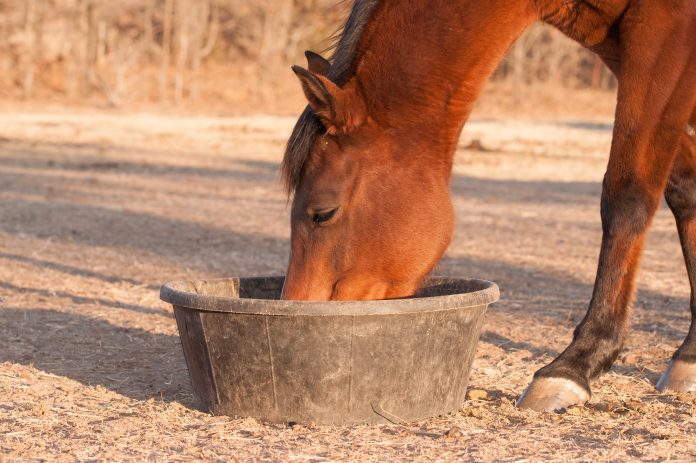Veteran vitality
By Kate Hore RNutr (Animal), senior nutritionist at NAF
Without doubt the equine population in the western world, including within the UK, is ageing. Surveys within the UK find about 30% of horses to be over 15 years old, with 11% being between 20 and 30 years, and 2% over 30 years of age. Therefore, as professionals, it’s important that we’re able to advise our customers on managing the older horse.
The reason for this ageing population is likely twofold. In part more of us keep horses purely as pets, and are happy to commit to keeping them well into their old age. Secondly improvements in nutrition knowledge, routine health treatments and equine dentistry have all contributed to horses living happily and healthily into their twenties and beyond.
However that doesn’t mean we’re growing a population of equine retirees – far from it! As improvements in equine health continue, so we find that horses maintain fitness through their teens and well into their twenties. Research in 2001 showed that while older horses tend to take it a little easier, the majority are still enjoying their work, with many actively competing into their late teens and beyond.
So what can we do from a feed and dietary point of view to help maintain our OAPs? That’s Old Age Performers of course!
What is a veteran?
Initially we should establish exactly what we mean by a ‘veteran horse’. There will be some breed differences, but generally, we are looking at horses in their mid-teens and beyond. With the growth of the veteran sector, showing classes are increasingly being broken down into ‘pre-veteran’, aged 15 to 19 years, and ‘veteran’ of 20 years and over; with sometimes a further section ‘diamond veteran’ for the over 25 year olds.
However, just because your horse has hit 15 years old, it doesn’t mean you should start to treat them any differently; and certainly their diet should only be changed when you see a real need to.
Feeding the veteran
It was traditionally thought that older horses suffer with reduced absorption and digestibility of the diet, and so struggle to maintain condition; therefore their diet needs to be changed accordingly, away from what you’ve always fed.
However that thinking is now a little out of date, as it refers to horses born in the 1960s and 70s who had not had the advantage of modern diets and wormers throughout their lives.
Now we find that ageing itself does not significantly affect digestive efficiency in horses until they become decidedly geriatric (late 20s), and not just older. In fact, just as with younger horses, a high Body Condition Score (BCS) should be avoided as it may exacerbate health concerns (see Keeping Sound, below).
The advice to owners of older horses, therefore, should certainly be to regularly review BCS and diet as the horse ages, but so long as the horse is maintaining condition and working well, then no radical changes are required.
For those horses who do need a little help, ensure the diet stays fibre based but consider short chop fibres or cubed hays which are more easily digested, especially when soaked. Instead, look at how their existing diet can be fine-tuned to make sure they are metabolising it to maximum efficiency, and covering all they need for old age performance.

For performance veterans, the addition of oil to a fibre diet provides an ideal form of energy. Easily metabolised by the horse and non-heating, oils, such as linseed or soya, are a useful energy source. If introducing oil to the diet remember to do so gradually, building the level over several weeks, to give the horse’s metabolism time to adjust.
However, once established, horses easily digest oil and most can tolerate up to around 500ml per day, which is a really useful additional source of energy, and so condition, for the diet. Just remember if feeding at significant levels, the high oil diet should be balanced with supplementary vitamin E, at a rate of one i.u. (International Unit) per millilitre (ml) of oil fed.
Gut health
One area where it is worth considering supplementary support is in gut health. Gastrointestinal conditions, such as colic, are a major concern in older equines. Research has found colic to be second only to musculoskeletal issues for reasons for mortality in older horses.
It is recommended to supplement with daily gut support, such a concentrated balancer, providing live probiotic yeasts and prebiotic sugars, to support a healthy microbiota (microbes including yeasts, fungi, bacteria) of the gastrointestinal tract. Concentrated balancers are formulated to include the essential micronutrients, such as vitamins, minerals and trace elements, to balance the fibre based diet.
Keeping sound
Musculoskeletal conditions, particularly lameness and osteoarthritis, are consistently found to be the biggest concern in older horses. In one study at a UK equine charity, the average age of euthanasia was 20, with 66% of those being due to osteoarthritis. So it represents a challenge for owners who wish to keep their older horses performing.
Of course the joints of performance horses undergo stress as part of normal work, but that is not the whole issue. It is thought that horses, like humans, show evidence of ‘inflammageing’, that is, a raised pro-inflammatory state within their body, meaning aches and pains are far more likely. As obesity also increases circulating inflammatory cytokines, this is a principle reason why all horses, including older horses, should be kept ‘fit not fat.’
To maintain joint health in older horses it is recommended to feed a good quality joint supplement. With the huge choice available it can be difficult to know which to advise.
Ensure any joint supplement provides glucosamine sulphate, which research shows is the most efficient form of glucosamine. However thanks to the research advancements in molecular biology we know that joint stress is a very complex multifactorial condition.
Multifactorial problems require multifactorial approaches – one size (glucosamine) cannot possibly fit all. Look for a supplement where glucosamine is combined with other key nutrients, particularly MSM. For maximum joint support that supplement should also include chondroitin sulphate, H.A, and antioxidant groups, all of which have been shown to work synergistically with glucosamine when in the right combination.
Of particular relevance to the older horse is to ensure that the chosen joint product includes a source of omega 3 fatty acids, which are well recognised for age related joint degeneration across species.
Time to say goodbye
Sadly, as equine professionals and horse owners, we know that for every veteran horse the day will come to say your final farewell.
It’s important that owners consider the horse first and foremost, over their own emotions. Quality of life is essential, so ensure their basic needs are being met. Are they able to graze and forage for most of the day, in the company of others without being bullied? Can they lie down and get back up unaided, and are they comfortable in walk, trot and – ideally – canter?
When the time does come, euthanasia may be carried out by lethal injection or humane bullet. It’s advised to discuss the options with your vet and make a plan ahead of time, which will make a difficult decision much easier for all.
Conclusion
By keeping horses fit and active, there is no reason why the competing life of performance horses can’t extend well into their twenties. And when the time comes to take it easier, our veteran horses can enjoy a comfortable retirement through the right management and nutritional support.











